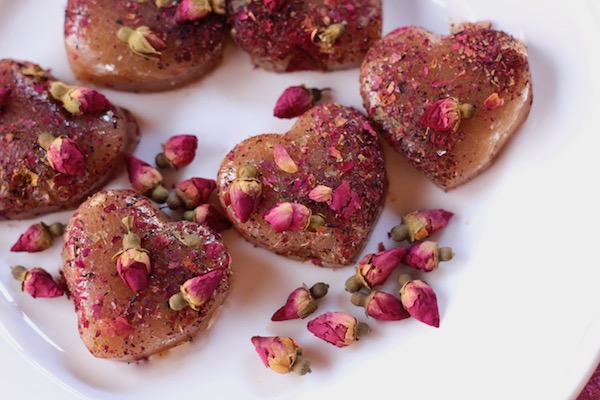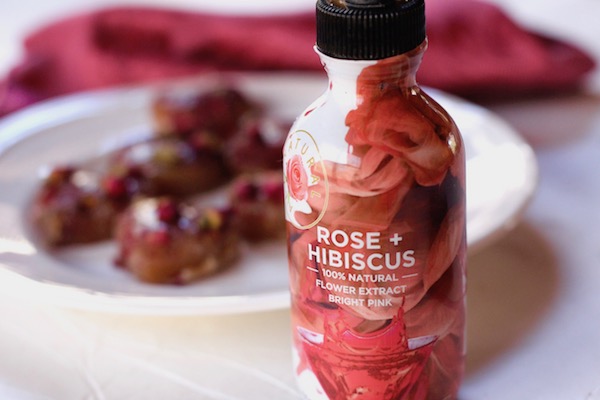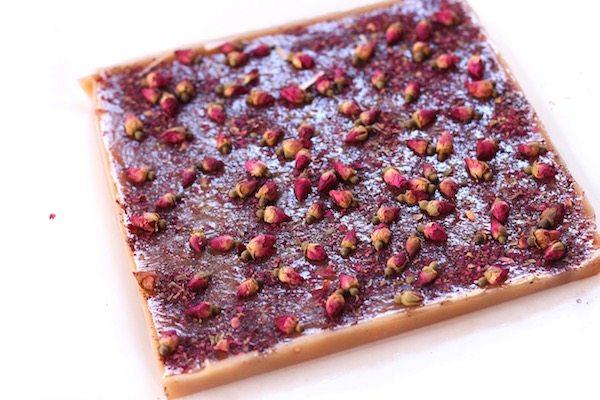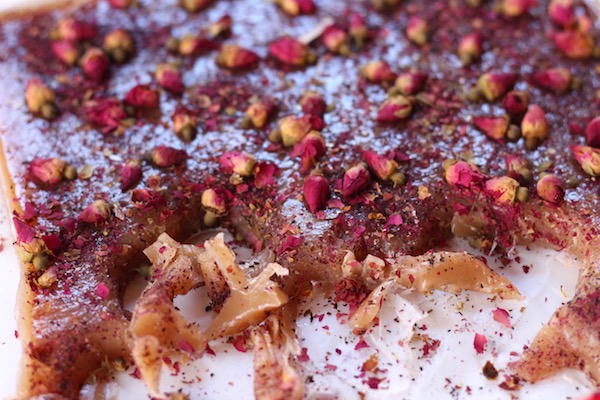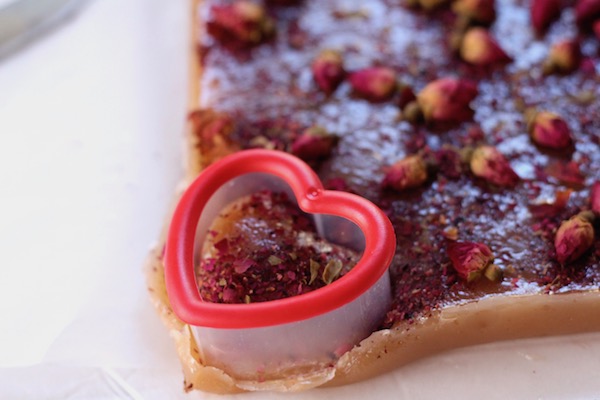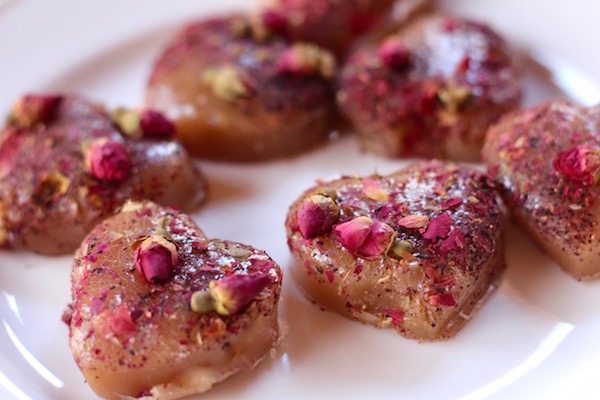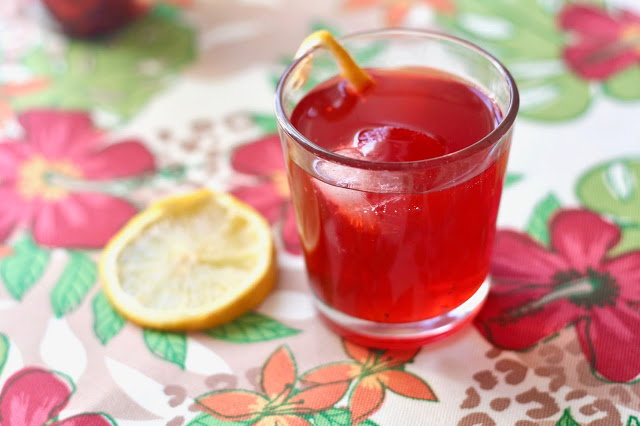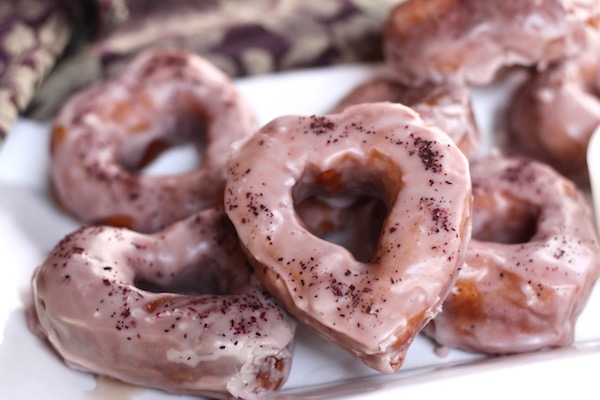I’m back in the kitchen playing with a beautiful product sent to me by The Wild Hibiscus Flower Company. I was saving this gorgeous Rose Hibiscus extract for something special. So here is my last Valentine’s Day post with these luscious, flowery, and slightly tangy chewy heart-shaped Hibiscus Rose Caramels.
This Rose Hibiscus high concentration extract from premium hibiscus and Bulgarian rose flowers is divine. The extract would make a gorgeous addition to a cocktail. I added it to the caramel mixture.
A History of Caramel Candy:
Caramel candy has a rich history that’s just as sweet as the treat itself! It dates back centuries, with variations of caramel-like substances seen as early as ancient Persia. The original caramel wasn’t the soft, chewy delight we know today. Early recipes involved cooking sugar or honey with water until it reached a brown, sticky state. While not quite the same as modern caramel, it had that familiar sweet taste and warm brown hue.
In the 17th century, caramel as we know it began to take shape in America. Settlers in the New World found that sugar was both accessible and cheap, and they started experimenting with candy recipes. By heating sugar with water, they could create a hard caramel, which eventually evolved into softer, chewier variations as they added milk, cream, and butter to the mix. This led to the gooey, creamy caramel we recognize today.
The real boom for caramel candy, though, came in the 19th century when enterprising confectioners, including Milton S. Hershey (yes, the chocolate Hershey), began producing caramel candies on a larger scale. Hershey first found success by making and selling caramel candies before he even thought of chocolate! His Lancaster Caramel Company helped put caramel on the map in the U.S. and made it a popular, everyday treat.
Caramel candies continued to grow in popularity through the 20th century, especially with innovations like individually wrapped squares, caramel creams, and, of course, caramel-covered apples in the fall. Today, caramel is a beloved flavor used in everything from candy bars to lattes.
Whether it’s drizzled, melted, wrapped, or hardened, caramel has come a long way from its ancient roots!
Back to these caramels:
These make gorgeous gifts or a fun project to make with friends.
Wishing everyone a Happy Valentine’s Day tomorrow!
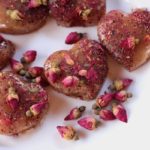
Rose Hibiscus Caramels
Ingredients
- 1 cup heavy cream
- 5 tablespoons unsalted butter cut into pieces
- 2 tablespoons hibiscus rose extract.
- 1 1/2 cups granulated sugar
- 1/4 cup light corn syrup
- 1/4 cup water
- 1/4 cup crushed dried hibiscus flowers or tea I used 2 tea bags
- 1/3 cup crushed dried rose petals or tea
Instructions
-
Line the bottom and sides of an 8- x 8-inch baking pan with parchment paper. Make sure the paper hangs over the pan on all sides.
-
Brush the bottom and the sides lightly with vegetable oil.
-
Heat the heavy cream, butter, and hibiscus rose extract In a small saucepan. Bring to a boil while stirring to combine.
-
Remove from the heat and set aside.
-
Place the sugar, corn syrup, and water in a large, heavy saucepan set over medium heat with a candy thermometer attached to the side.
-
Bring the mixture to a boil, stirring. Once the sugar is dissolved, do not stir again.
-
Cook the mixture until the temperature reaches 248 degrees F. Swirl the pan occasionally but do not stir the mixture.
-
Slowly pour the cream mixture into the sugar. Be careful because the mixture will bubble up.
-
Continue to simmer. Do not stir. Swirl the mixture frequently, for 15-25 minutes, or until the caramel thickens and turns golden brown. While simmering, keep your eye on the thermometer and do not allow the temperature to rise above 250 degrees F.
-
Pour the cooked caramel into the prepared pan.
-
While the caramel is warm, gently scatter and press the hibiscus and rose petals over the top.
-
Let the caramel cool for 2 hours.
-
Cut it into 1-inch pieces.
-
Alternatively, use a small heart cutter to cut the caramels.
-
Wrap each piece in squares of wax paper.
Like these Rose Hibiscus Caramels? Also, check out some of these other delicious recipes:

